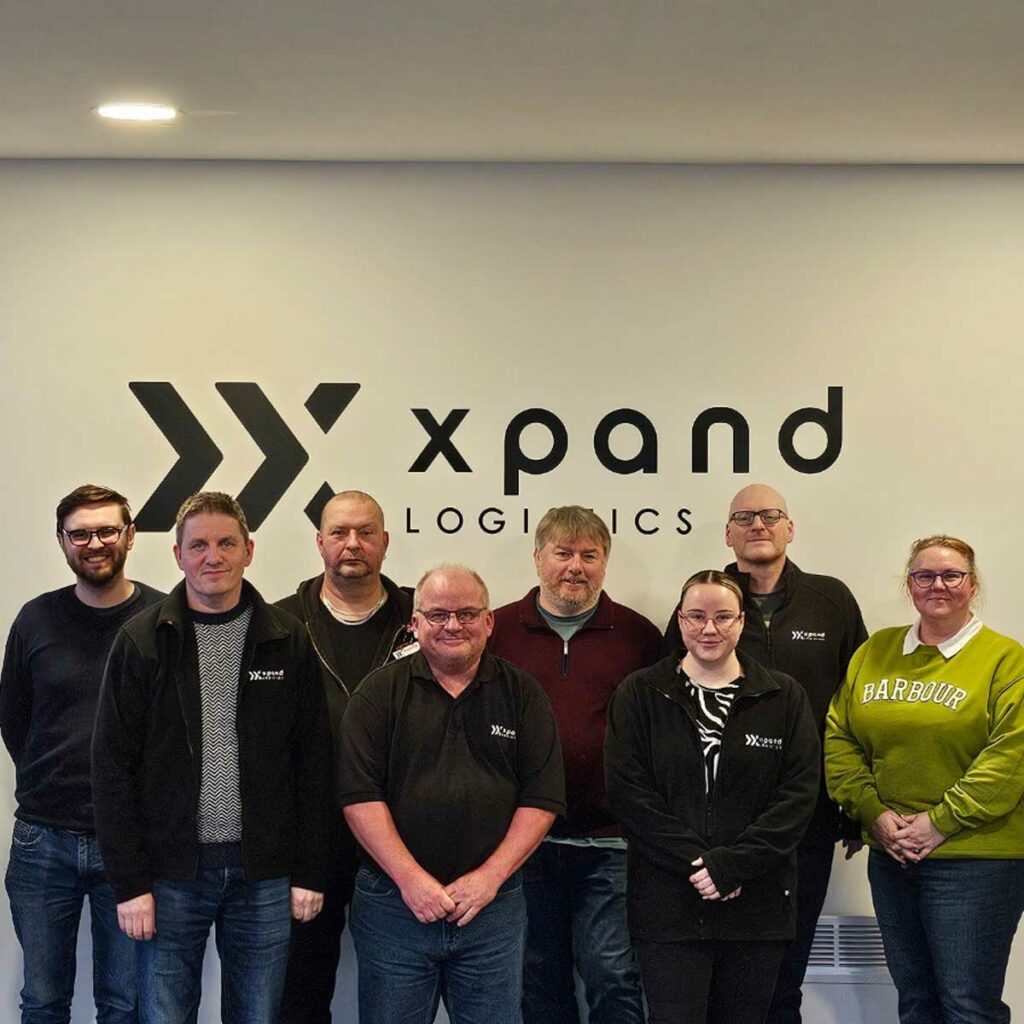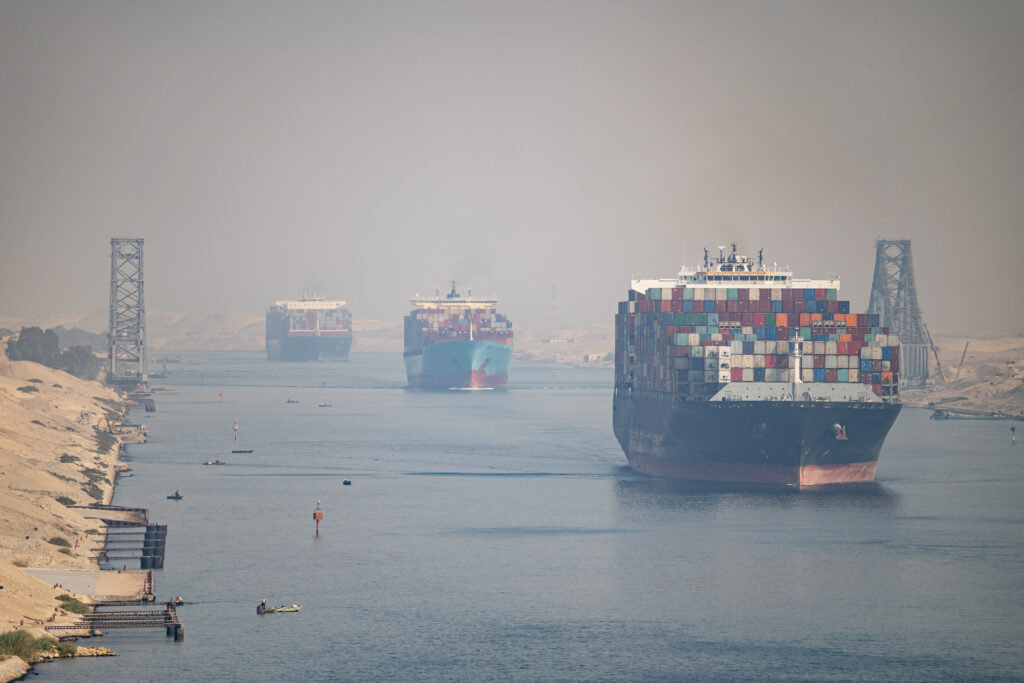
We are delighted to announce that our new logistics centre in Altrincham, Greater Manchester is now open and...
Shipping and logistics can be complex, so understanding the terms used is key to identifying your needs. That’s why our shipping and logistics glossary is essential for anyone in need of straightforward explanations about the industry.
AEO is an internationally recognized quality mark demonstrating the company’s role in the International supply chain is secure. To qualify for AEO status, companies’ customs controls and procedures must be efficient and compliant. To get the most benefit from AEO companies need to work with AEO compliant suppliers.
An air freight forwarder uses air transportation to move freight by either passenger aircrafts or specific cargo aircrafts.
An airway bill or AWB, is a document which accompanies the goods shipped via an international air courier service. This document provides detailed information about the shipment and allows it to be tracked. It serves as a contract of carriage between the shipper and the carrier.
Air container specification refers to the average external dimensions and weight limitations of the primary containers used for air transportation. See the full list of XPand Logistics’ air container specifications for further information.
A document which simplifies clearing your goods through multiple customs regimes across multiple countries. Used for samples, exhibition goods, concerts and large scale performances.
All-Risk Insurance covers general goods against risks of physical loss and damage caused by any external cause. This type of insurance is the broadest and most comprehensive type of insurance for logistics services.
Back to top
A Bill of Lading – otherwise referred to as a BL or BoL – is a legal document issued by a carrier to the shipper of goods which details the type, quantity, and destination of the goods being carried. A Bill of Lading is also referred to as a “shipment receipt” if the carrier delivers goods at a predetermined destination. Regardless of type of logistics transportation, the Bill of Lading document must always be signed by an authorised representative.
A bonded terminal is a warehouse or storage area that is approved by customs authorities for the temporary storage of imported goods until custom duties have been paid.
A broker is referred to as either a business, firm or person who arranges transactions between a buyer and a seller. This is usually for a commission when the transaction has been officiated.
This term is used to describe shipping items that are loosely shipped and transported, as opposed to being shipped in containers or packages. Examples of bulk cargo shipments can involve oil and coal goods.
A cargo manifest is a consolidated list of all the cargo being transported on a vessel. The document is used for shipments made either by road, air, or ocean to record the shipment’s consignor and consignee. It also lists product details such as origin and destination, quantity and weight and cost. The manifest is used by customs and other governing agencies.
A carrier is a company or person who is legally responsible and entitled to transport goods via water, land, and air. There are two main types of carriers: common carriers and contract carriers.
A vessel sharing agreement allowing carriers to extend their services and geographical coverage.
A certificate of origin is a document which declares in which country goods were manufactured. This document is an important form as it can help determine whether certain goods are eligible for importing or exporting and whether they are subject to duties.
Chargeable weight is either the volumetric or the gross weight of the shipment; and is based on whichever weight is greater. This is because larger items with a light gross weight can take up more space on a chosen aircraft, than a small, heavier item.
Transporter who transports goods over a definite route and according to a regular schedule.
Transporter who transports goods under an assigned contract for a specific or limited number of customers.
A consignee is a person or company who receives or signs for goods or documents. A freight forwarder is an intermediate consignee as they take possession of the goods before delivering them to the official consignee.
A consignor is a person or company who sends or exports goods or documents to sign for.
Consolidation is the process of combining several small shipments into one large shipment in order to realise lower transportation rates.
A container yard is either a dry port or terminal which is used to store containers before they are loaded onto a ship or after they are offloaded. This conserves space at the port.
Contracting out of all the warehousing, transport and distribution activities or a part thereof by manufacturing, wholesale or retail companies.
This is a mandatory process which involves more than the simple process of passing goods across borders. Customs clearance involves the screening of goods, the preparation and submission of certain documents to facilitate exports and imports, the payment of import duties, VAT and taxes, testing by customs agents and the storage of goods.
A single customs platform where all businesses will declare goods entering or departing the UK using specialist customs software, usually via an intermediary customs broker or logistics partner.
Dangerous goods are items or substances which could cause harm to health, safety, or the environment if not handled or packed professionally. Goods which are radioactive, flammable, explosive, corrosive, toxic, oxidising, or infectious are classified as dangerous.
Dangerous goods include pure chemicals, infectious substances, radioactive materials, compressed gases, dry ice, lithium batteries and aerosols.
Demurrage is a term which defines the penalty paid by shippers or consignees to a shipping line for the use of a container within the terminal beyond the free-period set and agreed to in a charter agreement.
An ETA is an estimated time of arrival of a ship, vehicle, or aircraft at a destination.
Some items require a government issued export licence before they are shipped internationally. Whether you need an export licence depends on several factors including end-use and end-user destination. Most goods do not require a licence, but it is the exporters responsibility to ensure this is in place if needed.
FAK is an acronym used in the shipping industry for Freight All Kinds. This term is a tariff structure which is applied irrespective of the commodity and is used mainly for Road by US SCAC Carriers, Shipping Lines and consolidators.
A full container load, otherwise known as ‘FCL’, is an ocean freight term which describes cargo loads which are large enough to fill a 20ft or 40ft container without having to share it with other shippers. FCL shipments fill the entire container. Therefore, the container is loaded and sealed at the factory and unloaded when it reaches the warehouse at the desired destination. Prices for transportation are quoted on this basis.
A hermetically sealed, collapsible and flexible bag which is designed to fit inside a twenty-foot standard DV container. Standard flexitanks can hold between 10,000 – 24,000 litres of liquid cargo, but must be used correctly.
Title of a standard clause in marine contracts exempting parties for non-fulfillment of obligations as a result of conditions beyond their control.
A foreign trade zone is a designated, secure area in or near a port of entry in the US, which is under US Customs and Border Protection supervision but which is considered outside of the country’s customs territory Foreign trade zones can be used for re-export of cargo to completely avoid applicable duties and tax as the merchandise was considered to never have entered the country.
A full truck load is a term used for cargo which fills a full truck load space. The truck carries one dedicated shipment. The opposite to a FTL is Less Than Truck Load (LTL).
Gross weight is the total amount of weight of a vehicle including its freight, fuel, accessories, driver, passengers etc.
International act or sacrifices which is used to safeguard vessels and cargo. The General Average Act is enacted when an extraordinary sacrifice is intentionally and reasonably made or incurred for the common safety in a maritime adventure.
Motor Generator used as a power source for temperature controlled containers.
Incoterms are a set of individual rules which have been issued by the International Chamber of Commerce to facilitate commerce around the world. There are 11 rules in total, which define the responsibilities of buyers and sellers for the sale and transportation of goods in international transactions.
An airline sharing agreement to allow airlines to move cargo across multiple services, typically used to extend an airlines geographical coverage beyond their own flights.
The most common delivery standard, the delivery truck will be parked at the premises of the delivery point and the recipient is responsible for unloading.
Landed cost represents the total cost of the cargo on it’s transportation journey from the first location to the last destination. Landed cost consists of the price of goods, shipping and storage costs, insurance fees, custom fees, duties and taxes. Calculating the landed cost is extremely vital for business operations.
Less than a container load, otherwise known as ‘LCL’, is an ocean freight term which describes cargo loads which are not large enough to fill a 20ft or 40ft container. LCL shipments can also be referred to as ‘groupage’ shipments as they fill less than a full shipping container and are grouped with other cargo.
Less than truckload shipping is a term used to describe the transportation of relatively small loads or quantities of freight. These shipping services can accommodate the shipping needs of a high number of businesses which need to move smaller batches of cargo on a frequent basis.
Method of payment between buyer and seller. The buyer opens a letter of credit in favour of the seller at his local bank. Upon presentation of specified documents called for under the letter of credit the local bank will release payment.
This type of insurance protects businesses from losses arising from physical damage to goods whilst being transported, from point of origin to final destination, whether by road, rail, air or sea. Marine insurance is a contract of indemnity.
A Moffett is a forklift truck, mounted to a lorry; used in project cargo deliveries and collections it allows the driver to self load and unload at destinations without forklift trucks on site.
Net weight is referred to as the weight of a product without its container or package.
A NVOCC or Non-vessel Operating Common Carrier is an ocean carrier who performs all of the services of a carrier, but who does not own their own vessels. They operate by leasing or buying container space from shipping lines to sell to their own customers under their own House Bill of Lading. They create their own tariffs based on their own liner services with the shipping lines.
Ocean container specification refers to the average external dimensions and weight limitations of the primary containers used for ocean transportation. See the full list of XPand Logistics’ ocean container specifications for further information.
Carriage of goods by any means of transport to the place of delivery after discharge from the ocean vessel at the port of discharge.
Planetmark is a recognised symbol of sustainability progress. It demonstrates a businesses’ commitment to measuring and reducing carbon emissions across their footprint.
Unit rate which is lower than the normal rate and applies to shipments moving by air which meet specific weight requirements.
Letter of credit which allows the exporter to receive a percentage of the face value of the letter of credit in advance of shipment.
Typically used to transport food and perishable items reefer containers keep goods at a constant temperature lower than 15 degrees.
Roll-on/roll-off ships are cargo ships that are designed to carry wheeled cargo such as trucks, cars, trailers, railroad cars etc. The vehicles are loaded and unloaded by means of built in ramps, normally located to the stern (backside) of the ship.
An abbreviated identification used by the transportation industry to identify freight carriers in computer systems and shipping documents. SCAC codes are heavily used in US Domestic road movements as well as in international movements worldwide.
Road trailer consisting of a frame and wheels, specially designed to transport sea freight containers.
Shipping term on a bill of lading. Typically used where the shipper arranges container loading rather than the logistics company. It is used to protect the carrier in the event of missing or damaged cargo.
SOLAS stands for “Safety Of Life At Sea”. It is an international maritime treaty, also known as the SOLAS Convention or International Convention for the Safety of Life at Sea (SOLAS), which establishes the minimum safety measures required in the construction, equipment and operation of merchant ships.
A steamship line or steamship carrier is usually referred to as a company that operates a fleet of steamships. They consist of a range of departments handling different aspects of the business such as vessel operations, container operations , tariff departments, bookings, and finally sales.
Back to top
Application of a higher tariff rate to imported goods after a specified quantity of the item has entered the country at a lower prevailing rate.
Terminal handling charges are fees collected by port terminals for the services they provide to handle, position, store and discharge containers. This charge only applies to ocean freight services.
Industry standard term for measuring vessel capacity for carrying cargo. The term also encompasses the handling capacity of container ports and port-to-port contracts between logistics companies and shipping lines. The measurement refers to the size of a standard 20ft container unit.
A unit load device or ULD is either a container or pallet which is used to load freight on a wide- body aircraft as well as a specific narrow-body aircraft. This then allows a large quantity of cargo to be packed together in a single unit/container.
The Verified Gross Mass (VGM) is the weight of the cargo including dunnage and bracing plus the tare weight of the container carrying this cargo. The International Convention for the Safety of Life at Sea (SOLAS) requires the shipper to provide VGM in a “shipping document,” either as part of the shipping instruction or in a separate communication, before vessel loading.
A VOCC or “Vessel-Operating Common Carrier” is a shipping company that owns and operates their own fleet of vessels and leases them to other entities. Also known as a shipping line, shipping company, or ocean carrier, a VOCC is responsible for managing the cargo and transporting it to the right destination at the scheduled time.
Larger enterprises typically opt to work directly with VOCCs, as they have the volume to fill an entire shipping vessel.
A Vessel Sharing Agreement is an agreement reached between shipping lines to share vessel space in order to meet demand on specific trade lanes. It is usually reached between various container shipping lines who agree to operate a liner service along a specified route using a specified number of vessels.
Rate applicable in connection with a specified volume (weight) of freight.
A trucking tariff term referring to any period of time beyond the allocated Free Time that a driver has to wait while the customer loads or unloads a container. Until the Free Time period has expired a driver can wait without the customer incurring extra expenses. Waiting Time, however, is chargeable to the client.
A document prepared by a transportation line at the point of a shipment; shows the point of origin, destination, route, consignor, consignee, description of shipment and amount charged for the transportation service. A waybill is forwarded with the shipment or sent by mail to the agent at the transfer point or waybill destination. Unlike a bill of lading, a waybill is not a document of title.
Weight or measurement is a method of quoting freight rates.
In ocean freight, the W/M is per metric ton or per cubic meter – whichever is greater. In air freight, the W/M is per kilogram or per cubic foot – whichever is greater.
A white glove service refers to one of many services for shipments that require special attention during shipping. These shipments are usually very heavy or very fragile and need to be handled with utmost care to prevent damage. The term “white glove” comes from the white gloves often worn by staff in luxury retailers, hotels, and restaurants. White glove services are offered by carriers who have trained staff that can safely handle and install certain items.



XPand Logistics Ltd
Unit 2, Essence House
Crabtree Road
Thorpe Industrial Park
Egham
Surrey TW20 8RN
| Website by Sharp Ahead
This website uses cookies so that we can provide you with the best user experience possible. Cookie information is stored in your browser and performs functions such as recognising you when you return to our website and helping our team to understand which sections of the website you find most interesting and useful.
Strictly Necessary Cookie should be enabled at all times so that we can save your preferences for cookie settings.
If you disable this cookie, we will not be able to save your preferences. This means that every time you visit this website you will need to enable or disable cookies again.